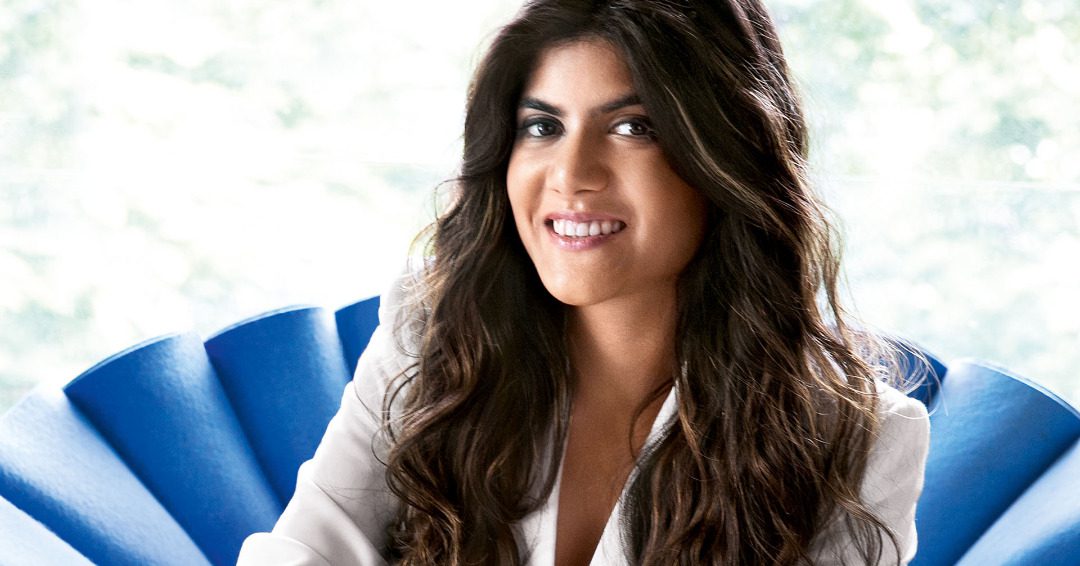(September 2, 2021) The velvety voice, the soulful music and poetic lyrics makes Priya Darshini‘s Periphery a heartfelt rendition. The album has captured millions of hearts with its melody and why not? It’s the same album that earned the 37-year-old her first Grammy nomination. Darshini, who began her journey with ad jingles and later tried her hands at Bollywood music, found her true calling in independent music. It’s the perfect blend of the East with the West that makes Darshini’s songs meaningful.
But it hasn’t been an easy journey for this Global Indian who had to battle personal and professional struggles to reach the top.
View this post on Instagram
Growing up with music
Born in Chennai into a Tamil-speaking family and raised in Mumbai, Darshini was enrolled into music classes with Carnatic vocalist Lakshmi Rajagopalan at the age of 9. With classically trained parents and grandparents being a source of inspiration, Darshini knew that music was her calling. But things took a turn for the worse when she had to undergo a vocal chords surgery at the age of 12. However, things started to look up and soon she began her training in Hindustani Classical vocals in her teens. Growing up on the MTV culture, Darshini got curious about the world music. But it was a tape of jazz queen Ella Flitzgerald that her father got from an official trip that blew her mind, and she instantly fell in love with jazz.
She performed with college bands while studying mass media at KC College in Mumbai. Despite the precautions and the exercises, Darshini’s vocal chords needed another surgery at 19. The fear of not being able to sing again left Darshini grapple with silence for months. “It was very scary, but it also taught me a lot. I listened better, developed more empathy for people… went through the whole ‘why me’ phase, followed by anger and then acceptance. Eventually I started seeing the benefits of being in silence with myself,” she told FirstPost.
With a change in voice quality, Darshini had to work extra hard on her chords. However, exercises and many training sessions later, Darshini found the perfect pitch, and as they say, rest is history.
View this post on Instagram
A Global Indian journey
While interning at an ad agency someone heard her and offered her a jingle. That was the beginning of her professional career. One jingle led to another, and soon, she was spotted by a Bollywood music composer. Her tryst with Hindi film industry began with Salman Khan’s Maine Pyaar Kyun Kiya? But it was independent music that captured Darshini’s heart. However, with not much indie music scene in Mumbai in the 2000s, the 37-year-old moved to New York Film Academy to study with a jazz vocalist in order to satisfy her insatiable creative appetite.
It was in 2008 that things started to align for the singer as she was chosen by American musician Roy Wilfred Wooten for his Black Mozart Ensemble at Nashville. The dream-like fusion of jazz, hip-hop, blues and classical music put Darshini on the global map. It was on her trip back to India that she met her future husband hammered dulcimer artist Max ZT. Since then, there has been no looking back for this Grammy-nominated singer who moved to the US in 2013.
The album that changed her life
For someone who found her voice in independent music went onto create albums like Grand Tapestry, Following Sunlight, House of Waters and Last House on the Block. But it was her 2020 album Periphery that became the talk of the town after it was nominated in the Best New Age Album category at the 63rd Grammy Awards.
A musical documentation of Darshini’s journey – from India to America and from classical music to jazz – the idea of Periphery germinated from not belonging anywhere. “Writing the record was cathartic. It helped me process that it was just about finding stillness within myself and learning to embrace myself in all my authenticity and honesty,” she told the Indian Express. It was the exploration of geopolitics that earned her album a nod at the prestigious music awards.
It’s the crossover between Darshini’s earthy classical training and the American folk and pop that made Periphery secure a place at the Grammy nomination list along with Anoushka Shankar’s Love Letters. Talking about her inspiration for the album, she said with her mixed learning lineages, she has found her peace at the periphery.
“I never quite fit in anywhere. To start with, I’m a South Indian in Mumbai. My cultural experiences were already quite different from those of my friends. From being a South Indian in Mumbai to being an Indian in the US, I have understood that being at the periphery while may be discomforting for others, is a place where I’ve found my peace,” she told FirstPost.
Darshini, who began her career with ad jingles, has come a long way with her music. And the Grammy nomination turned out to be the perfect validation for her years of hard work, perseverance and struggle. The music artist is truly merging East with the West through the soulful music.


